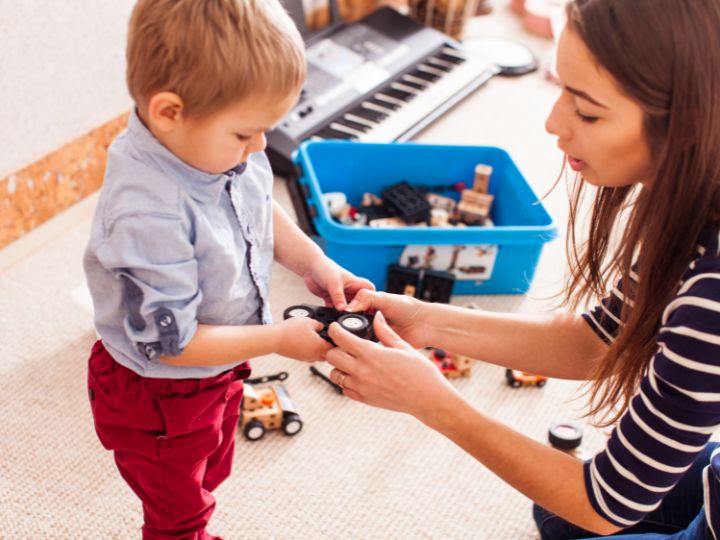Building the Foundations of Confidence
Children learn best when they feel supported, understood, and capable. For many children, especially those with dyspraxia, learning new motor skills can be challenging. They might struggle with planning and executing movements like holding a pencil, tying shoelaces, or even climbing stairs. Step-by-step guidance provides them with structure and predictability, helping them understand each action and gain confidence in their abilities. This approach not only nurtures their physical coordination but also supports emotional growth and independence.
Understanding the Importance of Motor Skill Development
Motor skills are essential for everyday life. From dressing up in the morning to playing with friends, every movement involves coordination and planning. Fine motor skills involve small muscle movements, such as writing or buttoning a shirt, while gross motor skills use larger muscle groups for activities like running and jumping.
When children experience difficulties in these areas, they may feel frustrated or avoid tasks that seem too hard. A structured, step-by-step approach helps break down these activities into smaller, achievable goals. This allows children to practise one movement at a time, build muscle memory, and gradually become more confident and independent in their daily routines.
The Role of Step-by-Step Guidance
Step-by-step guidance is more than just instruction — it’s a process that teaches patience, perseverance, and problem-solving. When adults model and explain each stage of a task clearly, children learn to follow sequences, understand cause and effect, and build cognitive connections between actions.
For example, instead of asking a child to “get dressed,” the process can be divided into smaller parts — selecting clothes, putting on a shirt, managing buttons, and then trousers or shoes. This method allows the child to master one stage at a time, reducing overwhelm and creating a sense of success with each completed step. Over time, these small wins motivate children to try more complex tasks independently.
Encouraging Repetition and Consistency
Repetition is vital for mastering motor skills. Consistent practice helps the brain form new neural pathways, making each movement smoother and more automatic. Step-by-step routines provide the structure children need to repeat tasks regularly, while still offering flexibility to adapt to their pace.
Parents and caregivers can make practice enjoyable by turning activities into games or challenges. For instance, a child could be encouraged to stack blocks, thread beads, or navigate a simple obstacle course. Each of these activities develops coordination, timing, and focus — all essential components of strong motor control.
Promoting Independence Through Positive Reinforcement
One of the most significant benefits of step-by-step guidance is how it promotes independence. By learning to complete small tasks successfully, children build a sense of accomplishment. This boosts self-esteem and encourages them to take on new challenges without constant assistance.
Positive reinforcement plays a crucial role here. Celebrating effort — not just outcomes — helps children recognise that progress comes from persistence. Praising them for each small achievement creates motivation and a growth mindset, reinforcing the belief that they can improve with practice and determination.
Creating a Supportive Environment
A nurturing environment makes all the difference when developing motor skills. Children feel more confident to try when they know mistakes are part of learning. Providing a calm, distraction-free space and offering encouragement throughout each stage helps them stay focused.
Parents and caregivers can also model patience and enthusiasm. When children see adults breaking down tasks and practising steps themselves, they are more likely to mirror this approach. Over time, this fosters resilience and a positive attitude toward learning new skills.
Integrating Play into Learning
Play is one of the most powerful ways to strengthen motor skills. Through playful activities, children experiment with movement, coordination, and spatial awareness naturally and enjoyably. Step-by-step play-based learning encourages exploration while maintaining structure.
For example, building with blocks can teach sequencing, balance, and fine motor control. Art and craft activities can help improve grip strength, precision, and creativity. Outdoor play — such as riding a scooter, hopping, or catching a ball — promotes whole-body coordination and balance.
When combined with gentle guidance, play becomes both educational and empowering, giving children the freedom to learn at their own pace while still developing essential motor skills.
The Emotional Impact of Progress
Physical progress often goes hand-in-hand with emotional growth. As children achieve new milestones, they gain a stronger sense of self-worth. Step-by-step guidance reduces the fear of failure, as children are encouraged to focus on one manageable goal at a time.
This gradual approach builds emotional resilience — they learn that even when something seems complicated at first, perseverance pays off. Over time, this confidence extends beyond physical tasks, influencing their attitude toward learning, social interactions, and problem-solving.
Supporting Long-Term Development
The benefits of structured guidance reach far beyond childhood. Children who develop solid motor skills early on often find it easier to adapt to new situations, follow instructions, and stay organised. They tend to participate more in group activities, which enhances social and communication skills.
Parents, teachers, and caregivers can continue to use step-by-step techniques as children grow, adapting tasks to suit their evolving needs. This not only maintains consistency but also reinforces independence and self-reliance as lifelong skills.
Final Thought
Step-by-step guidance is a simple yet powerful way to help children build stronger motor skills, greater confidence, and lasting independence. For children with coordination challenges such as dyspraxia, breaking tasks into smaller, achievable steps can make learning less daunting and more rewarding. By offering consistent support, encouragement, and opportunities for practice, parents and caregivers can nurture a child’s physical, cognitive, and emotional development — setting them on the path toward a more confident and independent future. Learn More!
